Diagnostický případ
Limp Mode
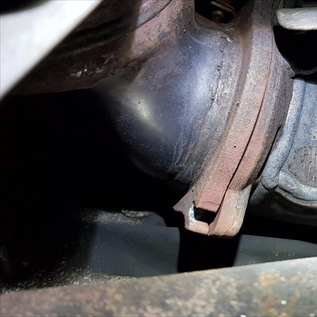
Informace o vozidle
| VIN: | WF0SXXGBWSAG306308 |
| Výrobce: | Ford |
| Model: | S-Max |
| Rok výroby: | 2011 |
| Kód motoru: | 2,0 SCTi EcoBoost |
| Typ motoru: | TPWA |
| Výkon (kW): | 176 kW |
| Převodovka: | Automatická |
| Palivo: | Benzín |
| Najeto: | 102 500 km |
Jak se závada projevuje
Nouzový režim.
Jak často se závada projevuje
-
Sporadicky / za specifických podmínek.
- Za jiných podmínek. During rapid acceleration and during load. When full throttle is applied then the engine goes into Limp Mode in 95% cases.
V jakém systému se závada vyskytuje
- Motoru.
Doposud provedeno bez úspěchu
The Pierburg electric switching valve (UVP) was replaced. The fault is still present. Before the problem ocurred the engine oil and filter were replaced.Závěr
VOZIDLO JSEM NEOPRAVOVALDuring testing it was not clear what is the cause why the engine is going to Limp Mode, even though everything was pointing to the turbocharger. It wasn't clear which part is defective, the turbocharger or the turbocharger boost control system. I wasn't able to test the turbocharger boost control system. Only with a vacuum hand pump I could adjust the boost control system. I was confused why I couldn't measure any pressure on the boost control system. After removal of the turbocharger I discovered that turbocharger case is cracked and thus boost control pressure is not available.
See attached photos.
Turbocharger replacement.
Obrázky, fotografie a soubory
Turbocharger boost control (7802/1)
Discovered a small leak between the turbocharger and exhaust manifold. Installed new bolt.DTC report (7802/2)
DTC - P132B - Boost Pressure Control - Incorrect FunctionRecording of Limp Mode setting (7802/3)
Recording of Limp Mode setting (7802/4)
Screenshot of failure (7802/7)
Bosch recording of Limp Mode setting (7802/8)
Intake manifold pressure sensor value at ignition ON (7802/9)
Pressure sensor verification of correct function. Measured pressure corresponds to barometric pressure.Turbocharger system schematics (7802/11)
2 - Boost Pressure Control - pressure controlled5 - Bypass Valve - vacuum controlled
Testing setup (7802/12)
Defective turbocharger (7802/13)
Visible crack of the turbocharger casing near the bypass valve and seized propeller wheel due to the cracked casing.The complete turbocharger casing is manufactured from sheet metal it's not a casting. The steel sheet casing cannot withstand the temperature stress.
Turbocharger casing failure (7802/14)
Turbocharger casing failure I (7802/15)
Turbocharger casing failure II (7802/16)
Damaged turbocharger propeller wheel (7802/17)
Exhaust manifold (7802/18)
The turbocharger is attached directly to the exhaust manifold. The manifold is distorted and is not sealing properly. Exhaust gas residue was on the manifold cover and on the cylinder block. Accessibility and visibility of such leaks is almost impossible without component removal or use of an endoscope.Soubory ke stažení
-
mwfRecording of failure (7802/5).mwf 1. yellow - Intake manifold pressure sensor after throttle valveStáhnout soubor
2. green - Boost control vacuum - pressure transducer (1V=1BAR)
3. blue - MAF sensor
4. red - EUV control valve current -
mwfRecording of failure I (7802/6).mwfStáhnout soubor


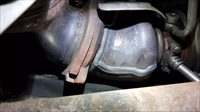

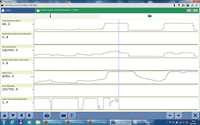
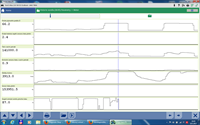
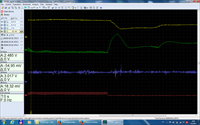
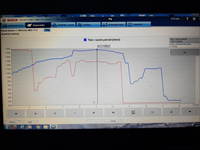


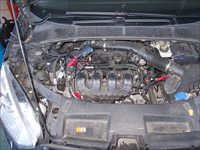
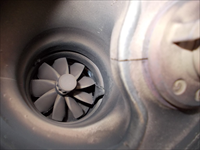

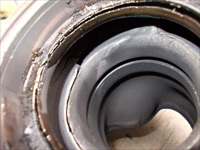
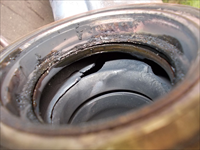

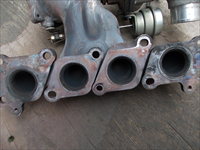

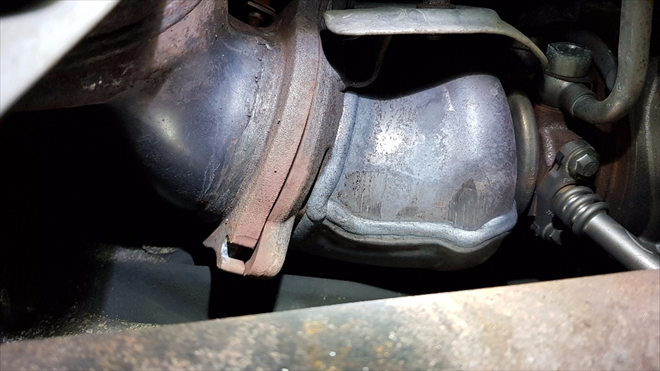
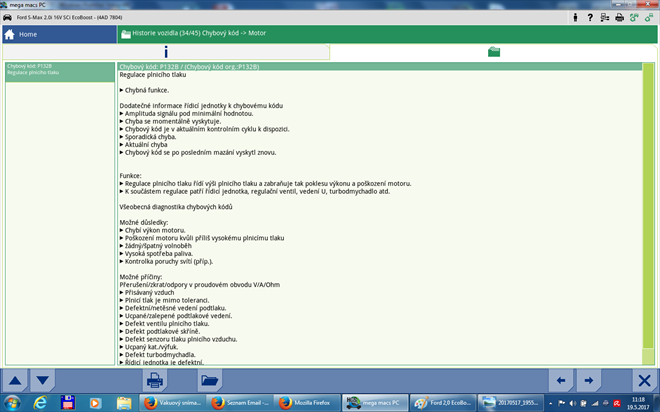

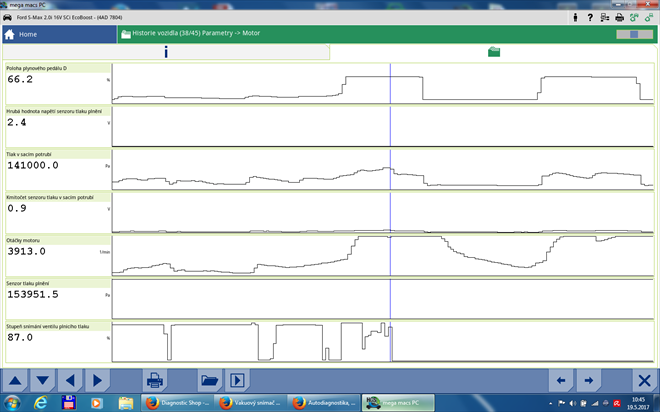
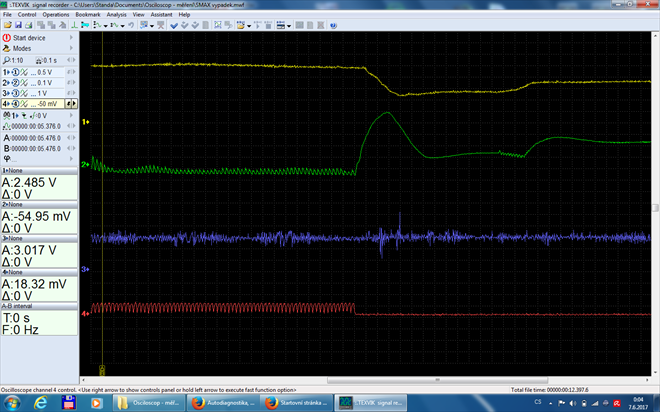
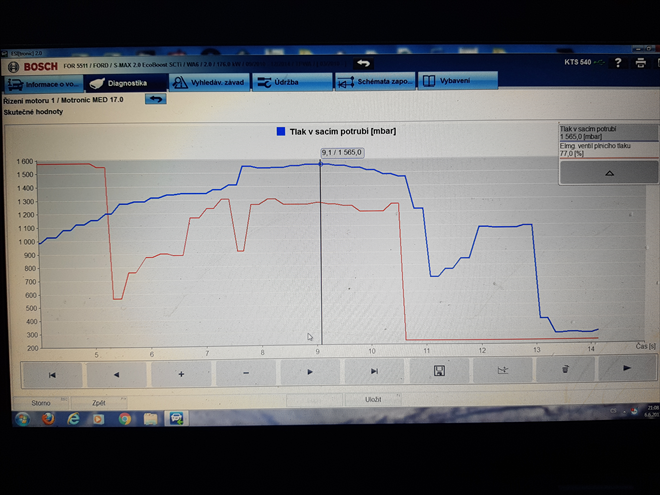

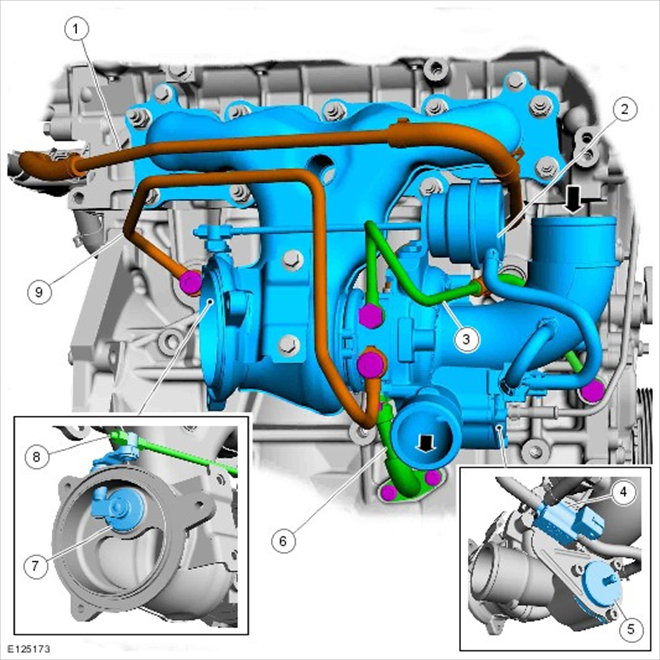
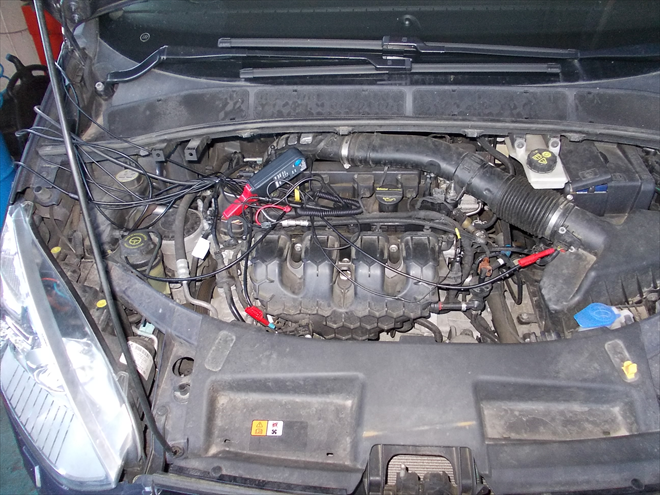


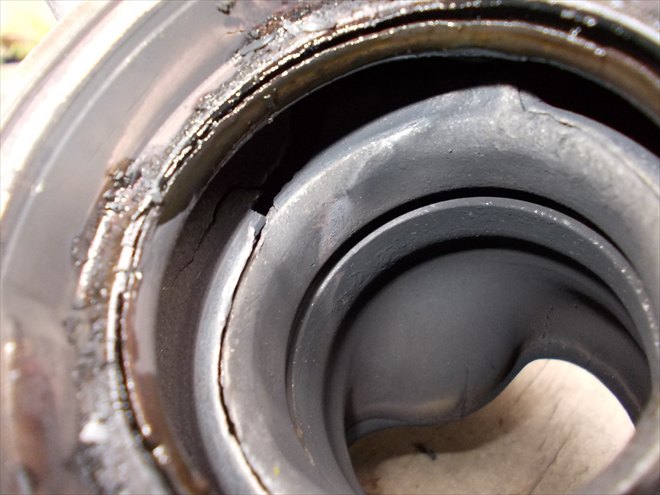
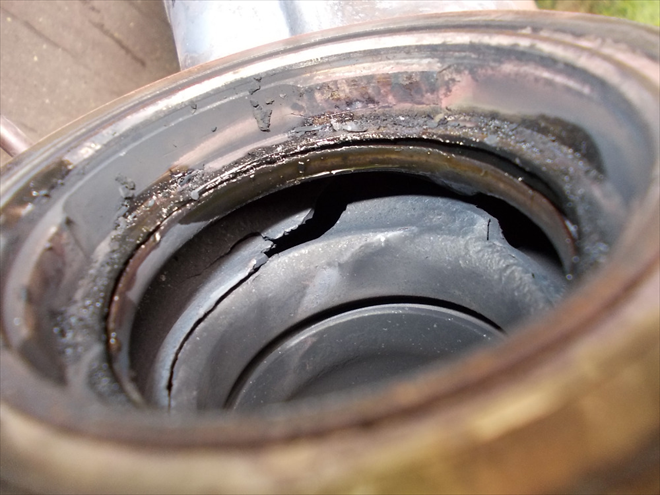


Komentáře (0)